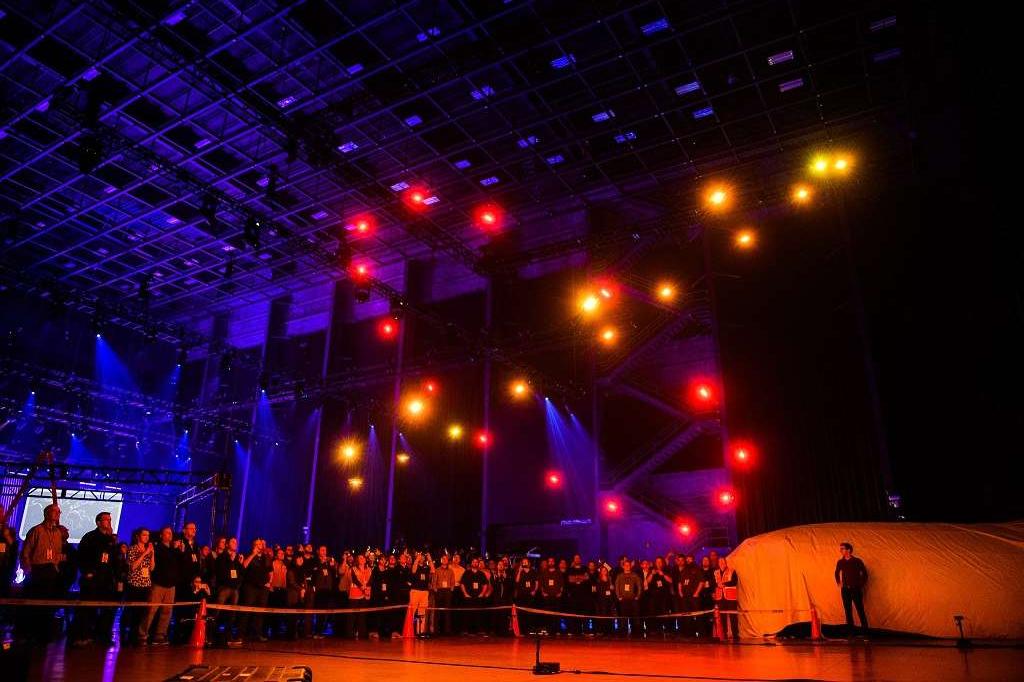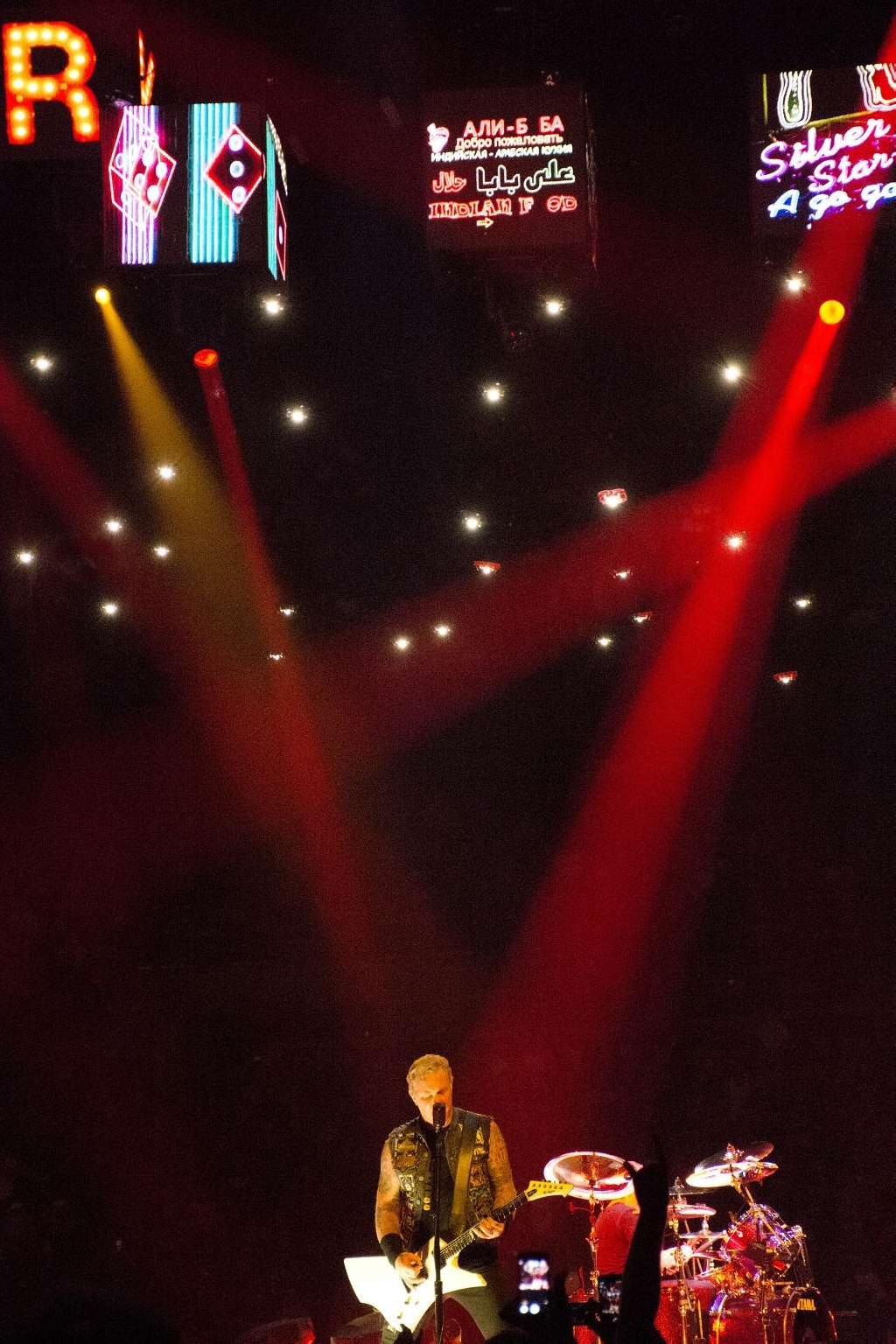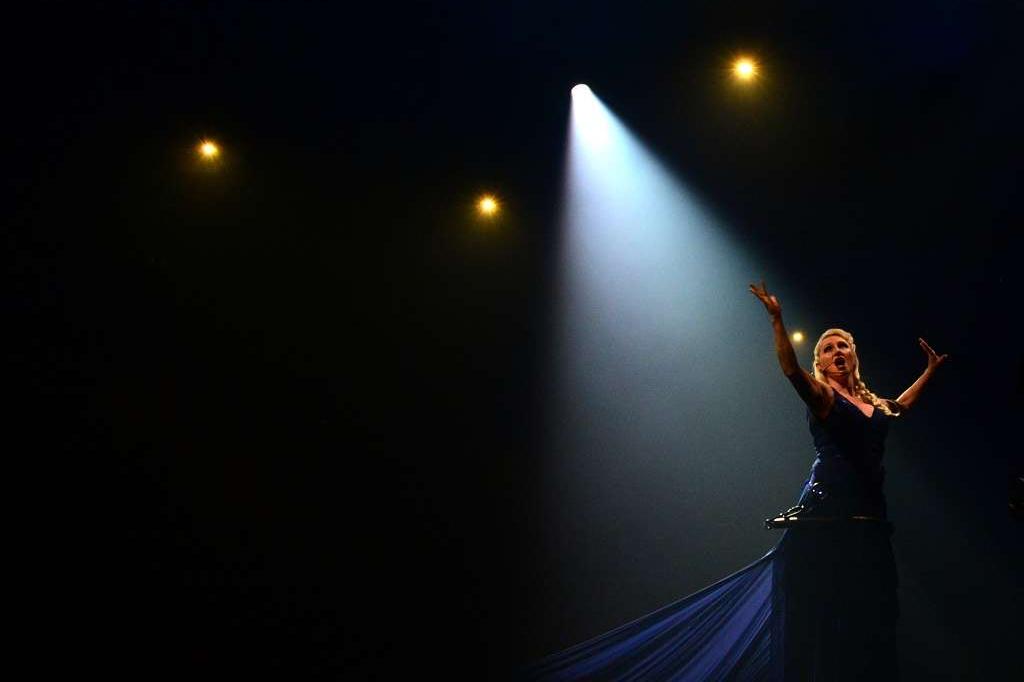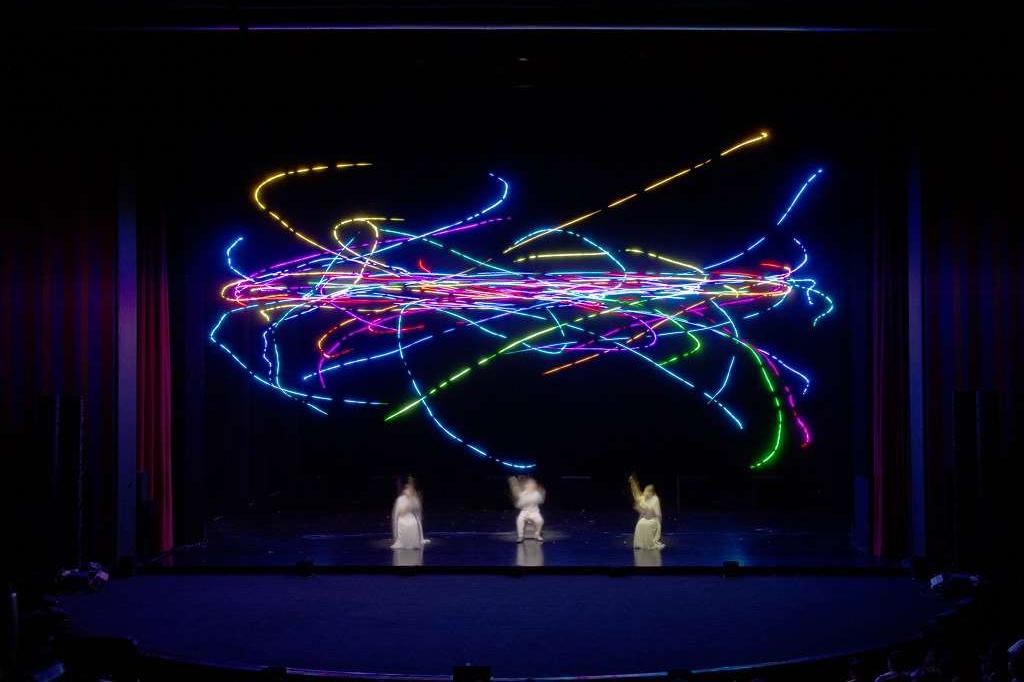Features
Verity Studios CEO On Drones At Metallica, Knicks Games, Singapore’s Changi Airport
Pollstar spoke with Markus Waibel, co-founder and CEO of Switzerland-based drone show expert Verity Studios, about the state of drones in live entertainment.

Event Safety Alliance – Event Safety Alliance Summit
Verity Studios drone show at the Event Safety Alliance Summit, 2017.
In the past three months alone, Verity Studios was responsible for three indoor drone shows on three continents: Metallica is currently on a record-breaking European tour with a swarm of the company’s Lucie micro drones; Singapore’s Changi airport features a Christmas-themed drone show twice per day throughout the holiday season; and 32 drones now perform with 16 dancers ahead of each Knicks home game at Madison Square Garden in Manhattan.
“All of these shows are fully client-operated, which speaks to the maturity of Verity’s drone show system. This year alone, our Lucie micro drones have completed more than 20,000 autonomous take-offs, flights, and landings, all without safety nets and with zero accidents,” Waibel said. Nevertheless, the shows to date barely scratch the surface of what is possible.

Verity Studios – Verity Stduios
Metallica’s James Hetfield performing with Verity Studios drones, 2017.
Drones can be used for flying lighting displays, animation of flying characters, movement of stage props and scenographic elements, as well as the creation of flying robot actors and synthetic swarms. What is more, dedicated events are emerging around drone racing.
Despite this amount of use cases, promoters have never approached Verity Studios directly, which Waibel finds interesting: “Many of the world’s leading creatives see the potential, but only a tiny fraction of today’s events have used drones.”
When it comes to deploying drones at live music events, “safety is always top-of-mind,” according to the CEO. “In fact, when founding Verity Studios our team decided to take the lessons learnt from hundreds of drone demonstrations behind safety nets and re-engineer a new system around safety and reliability, from scratch.”
To date, Verity’s system has performed some 27,000 autonomous drone flights between its larger Stage Flyer and tiny Lucie drones, all without accident. Drone safety at live events does not only concern Verity’s drones, of course, “which is why we are working with leading events professionals and aviation experts to establish best practices for using drones at live events.”
The company published an overview document focused on best practices for drone shows, which is available on its website. Verity Studios specializes in indoor drone shows, which are technologically more challenging than their outdoor counterparts because GPS is not available.
What is more, drones fly right next to crowds of people, so safe flight is paramount.
The company has developed its own indoor positioning system that uses an “interference-resistant radio-frequency solution.”
Said Waibel: “Other companies offer solutions based on optical systems like cameras, which results in challenging problems to achieve safety and reliability, including interference from lighting effects, requirements of direct line of sight, and frequent system recalibration.”
Because indoor shows happen so close to the audience, the drones appear much more dynamic, “resulting in more of a dance performance rather than a quasi-static lighting display in the sky. Flying drones around people on stage also opens the door to many other creative uses that play with the intimacy and tension created by their presence on stage.”

Matt DeJong – Fantastic Journey
Drone performance Fantastic Journey on the Majestic Princess, 2017.
He added: “An important consideration often overlooked both indoors and outdoors is that safety considerations need to go well beyond the drones themselves. For example, many drone crashes happen because drones lose radio communication. This will seem obvious to many readers, but a properly architected system should not rely on radio communication as a critical link.”
According to Waibel, there are really only three ways to safely fly drones at live events. The first is the same approach used to make commercial aircraft safe: duplication of components or redundancy, which is how Verity achieved safety in its Broadway projects. The company’s Stage Flyer drones contain each component at least twice: two batteries, two flight computers, duplicate sets of all sensors.
“The drone can continue to fly in spite of any individual component failure. On Broadway, this allowed us to perform 398 shows and more than 7,000 autonomous take-offs, flights, and landings, without accident. In one of the last shows, one drone had a battery failure. The concerned drone simply performed a safety landing, and the show continued with 7 instead of 8 drones,” Waibel explained.
He described this approach to safety as “highly unusual [since] all drones you can buy off the shelf today have single points of failure. That is unfortunate, because component failures happen fairly frequently and a component failure on a drone almost inevitably results in a crash, as the increasingly long list of safety incidents with non-redundant drones at live events confirms. Today’s commercially available drones are simply not designed to be flown around crowds of people.”
The way safety is usually achieved for outdoor drone shows is physical separation, i.e. the show happens over a body of water or closed-off roads. The intro for the halftime show of Super Bowl LI in Houston, Texas, was recorded far away from NRG stadium.
In addition, it was pre-recorded, adding another safety layer to the outdoor show.
“The third approach,” according to Waibel, “is to make the drones so small that they have high inherent safety. Our Lucie micro drones weigh a mere 1.8 ounces or 50 grams.”

– Apologue 2047
Drone show Apologue 2047 at the Beijing National Center of Performing Arts, 2017.
It is for the reasons above that drones aren’t fit for event surveillance at the moment.
Waibel: “Using camera drones around crowds of people, be it for security at live events or other applications, requires camera drones that are either so small that they have high inherent safety or camera drones that are fully redundant. Neither is available today.”
Verity uses its Lucie micro drones for the vast majority of productions. They are equipped with a powerful RGBW LED and can be programmed to work in unison with other stage elements including music, lighting, video, and human performance – flying lights that can be freely positioned in 3D space, offering a new aesthetic when it comes to stage lighting.
Waibel thinks it “reasonable to expect that multi-functional arenas could be better designed to accommodate drone-related events. The key requirement for drones is a reliable indoor positioning system. Given the myriad of applications GPS has enabled outdoors, such a system could find many other use cases, from guiding the arena’s guests to enabling automated cleaning robots.”